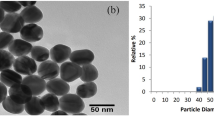Abstract
Heat pipe heat exchangers (HPHEs) offer an efficient solution for industrial waste heat recovery by utilizing latent heat transfer. This study compared a traditional water-based HPHE and one augmented with 1% silver nanoparticles by volume. The HPHEs with distinct 500-mm evaporator and condenser sections were assessed on parameters like temperature distribution, heat transfer rates, thermal resistance, and effectiveness under varying thermal loads (70–90 W) and hot/cold fluid mass flow rates (0.2–0.6 kg min−1 and 0.1–0.3 kg min−1). The nanofluid HPHE demonstrated superior performance, with a 12.21 °C peak evaporator temperature difference and 39.25% maximum effectiveness at optimal conditions, exceeding the DI water HPHE by over 10%. The higher heat fluxes proportionally improved heat transfer parameters. Moderate mass flow rates around 0.2 kg min−1 (hot fluid) and 0.1 kg min−1 (cold fluid) optimized performance. The unconventional adiabatic-less design improved heat transfer compared to traditional heat pipes. The nanofluid HPHE’s exceptional heat recovery capacity proves its viability for harnessing low-grade industrial waste heat, leading to significant energy savings. The study provides critical insights into thermal performance enhancements through synergistic HPHE design modifications and nanoparticle augmentation of the working fluid.










Similar content being viewed by others
Abbreviations
- HPHE:
-
Heat pipe heat exchanger
- ∆T :
-
Temperature difference
- ∆TE:
-
Evaporator temperature difference
- ∆TC:
-
Condenser temperature difference
- Q:
-
Heat transfer rate
- QHE:
-
Evaporator heat transfer rate
- QHC:
-
Condenser heat transfer rate
- Rth:
-
Thermal resistance
- U :
-
Overall heat transfer coefficient
- ε :
-
Effectiveness
- ṁ :
-
Mass flow rate
- ṁh:
-
Hot fluid mass flow rate
- ṁc:
-
Cold fluid mass flow rate
- DI:
-
Deionized
- RTD:
-
Resistance temperature detector
- LMTD:
-
Log mean temperature difference
References
Abdallah AS, Yasin NJ, Ameen HA. HPHE performance enhancement using nano fluid and nano coated fins. 2022.
Abdelkareem MA, Maghrabie HM, Sayed ET, Kais ECA, Abo-Khalil AG, Radi M, Al Baroutaji A, Olabi AG. Heat pipe-based waste heat recovery systems: Background and applications. Therm Sci Eng Prog. 2022;29. https://doi.org/10.1016/j.tsep.2022.101221.
Adrian Ł, Szufa S, Piersa P, Mikołajczyk F. Numerical model of heat pipes as an optimization method of heat exchangers. Energies (Basel). 2021. https://doi.org/10.3390/en14227647.
Ali SM, Sarsam WS. Theoretical and experimental investigation of a HPHE for energy recovery of exhaust air. Heat Transf. 2022;51:3600–19. https://doi.org/10.1002/htj.22466.
Babli L, Pandey S. A survey on heat pipe heat recovery systems. 2023.
Bumataria RK, Chavda NK, Nalbandh AH. Performance evaluation of the cylindrical shaped heat pipe utilizing water-based CuO and ZnO hybrid nanofluids. Energy Sources Part A Recov Utiliz Environ Effects. 2020. https://doi.org/10.1080/15567036.2020.1832628.
Chen LP, Yu LP, Hao MC, et al. Advances and prospects in heat pipe: a critical eview. In: E3S Web of Conferences. EDP Sciences, 2021.
Gangacharyulu Dasaroju, Sumeet Sharma, Sanjay Singh,'' Experimental investigation of heat pipe with annular fins under natural convection at different inclinations''. International Journal of Mechanical and Mechatronics Engineering. 2019;13(2):154–158.
Ghorabaee H, Emami MRS, Moosakazemi F, et al. The use of nanofluids in thermosyphon heat pipe: a comprehensive review. Powder Technol. 2021;394:250–69.
Guo C, Wang T, Guo C, et al. Effects of filling ratio, geometry parameters and coolant temperature on the heat transfer performance of a wraparound heat pipe. Appl Therm Eng. 2022. https://doi.org/10.1016/j.applthermaleng.2021.117724.
Han X, Wang Y. Experimental investigation of the thermal performance of a novel concentric tube HPHE. Int J Heat Mass Transf. 2018;127:1338–42. https://doi.org/10.1016/j.ijheatmasstransfer.2018.07.116.
Hossen S, Morshed AM, Tikadar A, et al. Experimental investigation of hphe (HPHE) for waste heat recovery application. Begell House, 2019; pp 843–851
Jouhara H, Almahmoud S, Brough D, et al. Experimental and theoretical investigation of the performance of an air to water multi-pass heat pipe-based heat exchanger. Energy. 2021. https://doi.org/10.1016/j.energy.2020.119624.
Garg, M., Nautiyal, H., Khurana, S., & Shukla, M. (2016). Heat transfer augmentation using twisted tape inserts: A review. Renewable and Sustainable Energy Reviews, 63, 193-225. https://doi.org/10.1016/j.rser.2016.04.051
Kumar V, Jain SV, Shah Y, Lakhera VJ. Parametric studies on interacting parameters influencing heat pipe performance. Proc Inst Mech Eng Part A J Power Energy. 2021;235:594–607. https://doi.org/10.1177/0957650920951100.
Kumar PR, Sivasubramanian M, Kanna PR, Raveendiran P. Heat transfer augmentation of gravity assisted multi heat pipe induced heat exchanger. Int J Eng Adv Technol. 2019;9:648–52. https://doi.org/10.35940/ijeat.A1037.1291S419.
Mahdavi M, Tiari S, De Schampheleire S, Qiu S. Experimental study of the thermal characteristics of a heat pipe. Exp Therm Fluid Sci. 2018;93:292–304. https://doi.org/10.1016/j.expthermflusci.2018.01.003.
Mroue H, Ramos JB, Wrobel LC, Jouhara H. Experimental and numerical investigation of an air-to-water heat pipe-based heat exchanger. Appl Therm Eng. 2015;78:339–50. https://doi.org/10.1016/j.applthermaleng.2015.01.005.
Naruka DS, Dwivedi R, Singh PK. Experimental inquisition of heat pipe: performance evaluation for different fluids. Exp Heat Transf. 2020;33:668–82. https://doi.org/10.1080/08916152.2020.1713254.
Natesan K, Karinka S. A comprehensive review of heat transfer enhancement of heat exchanger, heat pipe and electronic components using graphene. Case Stud Therm Eng. 2023. https://doi.org/10.1016/j.csite.2023.102874.
Raghavendra CR, Hasavimath K, Naik K. Study on effectiveness of HPHE with copper tube cylinders. Mater Today Proc. 2020;39:800–4.
Ramkumar P, Sivasubramanian M, Raveendiran P, Kanna PR. An experimental inquisition of waste heat recovery in electronic component system using concentric tube HPHE with different working fluids under gravity assistance. Microprocess Microsyst. 2021. https://doi.org/10.1016/j.micpro.2021.104033.
Ramkumar P, Sivasubramanian M, Rajesh Kanna P, Raveendiran P. Heat transfer behaviour on influence of an adiabatic section on concentric tube shell assisted HPHE. Int J Ambient Energy. 2021;42:672–81. https://doi.org/10.1080/01430750.2018.1563809.
Reji AK, Kumaresan G, Sarathi A, et al. Performance analysis of thermosyphon heat pipe using aluminum oxide nanofluid under various angles of inclination. Mater Today Proc. 2021;45:1211–6.
Sudhan ALS, Ramachandran K, Solomon AB, Jawahar CP. Research progress on performance enhancement of heat pipes: a review. J Therm Anal Calorim. 2022;147:2847–83.
Tarigonda H, Shaik DPMD, Reddy DRR, Reddy GVS. Experimental investigation on the heat pipe using Al2O3 and CuO hybrid nanofluid. Int J Thermophys. 2022. https://doi.org/10.1007/s10765-022-03078-x.
Vidhya R, Balakrishnan T, Kumar BS. Experimental and theoretical investigation of heat transfer characteristics of cylindrical heat pipe using Al2O3–SiO2/W-EG hybrid nanofluids by RSM modeling approach. J Eng Appl Sci. 2021. https://doi.org/10.1186/s44147-021-00034-8.
Wang Z, Zhang H, Yin L, et al. Experimental study on heat transfer properties of gravity heat pipes in single/hybrid nanofluids and inclination angles. Case Stud Therm Eng. 2022. https://doi.org/10.1016/j.csite.2022.102064.
Xue L, Ma G, Zhou F, Wang L. Operation characteristics of air–air heat pipe inserted plate heat exchanger for heat recovery. Energy Build. 2019;185:66–75. https://doi.org/10.1016/j.enbuild.2018.12.036.
Yao W, Kong X, Han X, Wang Y, Cao J, Gao W. Research on the efficiency evaluation of heat pipe PV/T systems and its applicability in different regions of China. Energy Convers Manag. 2022;269. https://doi.org/10.1016/j.enconman.2022.116136.
Zhong K, Meng Q, Ren P, Ran M, Zhang Z, Liu X, Feng C. Performance evaluation of a novel hybrid cooling system combining air source heat pump and urban underground pipe rack. J Build Eng. 2022;54. https://doi.org/10.1016/j.jobe.2022.104647.
Höhne T. CFD simulation of a heat pipe using the homogeneous model. Int J Thermofluids. 2022;15. https://doi.org/10.1016/j.ijft.2022.100163.
Asadi A, Zaboli M, Mogharrebi AR, Saedodin S, D.D. Ganji. Numerical analysis of turbulence-inducing elements with various geometries and utilization of hybrid nanoparticles in a double pipe heat exchanger. Alex Eng J. 2022;61(5):3633–3644. https://doi.org/10.1016/j.aej.2021.08.074.
Wang J, Yu K, Duan R, Xie G, Sundén B. Enhanced thermal management by introducing nanoparticle composite phase change materials for cooling multiple heat sources systems. Energy. 2021;227. https://doi.org/10.1016/J.ENERGY.2021.120495.
Min H, Zhang Z, Sun W, Min Z, Yu Y, Wang B. A thermal management system control strategy for electric vehicles under low-temperature driving conditions considering battery lifetime. Appl Therm Eng. 2020;181. https://doi.org/10.1016/J.APPLTHERMALENG.2020.115944.
Nemec S, Kralj S, Wilhelm C, Rols M. Comparison of iron oxide nanoparticles in photothermia and magnetic hyperthermia: effects of clustering and silica encapsulation on nanoparticles’ heating yield. Appl Sci. 2019;10(20):7322. https://doi.org/10.3390/app10207322.
Shahsavar A, Alimohammadi S, Askari IB, Shahmohammadi M, Jamei M, Pouyan N. Two-phase mixture numerical and soft computing-based simulation of forced convection of biologically prepared water-silver nanofluid inside a double-pipe heat exchanger with converging sinusoidal wall: Hydrothermal performance and entropy generation analysis. Eng Anal Bound Elem. 2022;143:43–60. https://doi.org/10.1016/j.enganabound.2022.06.008.
Said Z, Rahman SMA, el Haj Assad M, Alami AH. Heat transfer enhancement and life cycle analysis of a Shell-and-Tube Heat Exchanger using stable CuO/water nanofluid. Sustain Energy Technol Assessments. 2019;31:306–317. https://doi.org/10.1016/J.SETA.2018.12.020.
Tian Z, Gan W, Zhang X, Gu B, Yang L. Investigation on an integrated thermal management system with battery cooling and motor waste heat recovery for electric vehicle. Appl Therm Eng. 2018;136:16–27. https://doi.org/10.1016/J.APPLTHERMALENG.2018.02.093.
Zheng D, Wang J, Chen Z, Baleta J, Sundén, B. Performance analysis of a plate heat exchanger using various nanofluids. Int J Heat Mass Transf. 2020;158:119993. https://doi.org/10.1016/j.ijheatmasstransfer.2020.119993.
Nivedini G, Prasad K, Sandeep C, Venkateswara Rao K. Empirical and CFD analysis of silica nanofluid using a double pipe heat exchanger. SN Appl Sci. 2020;2(12):1–10. https://doi.org/10.1007/S42452-020-03916-3/FIGURES/14.
Wang G, Li Y, Jiang T, Chen Z. Effect study of super-critical CO2 parameters on heat transfer performance of U-shaped double-pipe heat exchanger. Case Stud Therm Eng. 2022;30. https://doi.org/10.1016/j.csite.2022.101762.
Quan X, Wang D, Cheng P. An experimental investigation on wettability effects of nanoparticles in pool boiling of a nanofluid. Int J Heat Mass Transf. 2017;108:32–40. https://doi.org/10.1016/J.IJHEATMASSTRANSFER.2016.11.098.
Acknowledgements
Thanks to Kalasalingam Academy of Research and Education, Kalasalingam University, Krishnan koil, Tamil Nadu, for providing laboratory facilities and technical support for the smooth conduct of this research work.
Author information
Authors and Affiliations
Corresponding author
Additional information
Publisher's Note
Springer Nature remains neutral with regard to jurisdictional claims in published maps and institutional affiliations.
Rights and permissions
Springer Nature or its licensor (e.g. a society or other partner) holds exclusive rights to this article under a publishing agreement with the author(s) or other rightsholder(s); author self-archiving of the accepted manuscript version of this article is solely governed by the terms of such publishing agreement and applicable law.
About this article
Cite this article
Sethuraman, R., Muthuvelan, T. & Mahadevan, S. Comparative analysis of thermal performance in heat pipe heat exchangers employing two distinct convective heat transfer media. J Therm Anal Calorim 149, 4069–4085 (2024). https://doi.org/10.1007/s10973-024-12944-9
Received:
Accepted:
Published:
Issue Date:
DOI: https://doi.org/10.1007/s10973-024-12944-9




